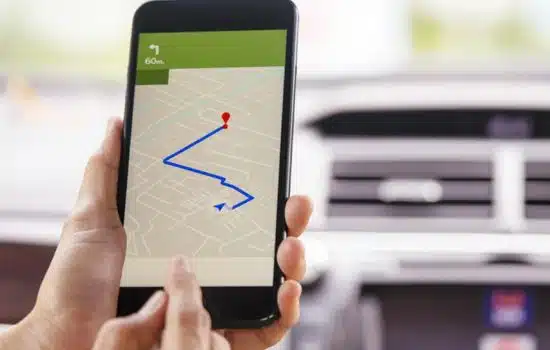Advertisements
GPS applications have revolutionized the way we move around on a daily basis, offering not only convenience, but also safety and time savings.
With the popularization of smartphones, tools like Google Maps, Waze and Komoot have become indispensable for drivers, cyclists and even pedestrians.
Advertisements
These apps offer a number of features that make navigation more efficient, requiring little or no effort to find the best route to your desired destination.
But, despite being all in the same category, each of these applications has features that make them unique, satisfying different user needs.
Advertisements
Google Maps: The Universal Companion
See also:
- The 3 best apps to identify birds
- Karaoke has been one of the most popular forms of entertainment
- The Best Apps to Create Videos with Photos and Music
- The Best Accordion Apps
- Apps for Singing in Tune: An Essential Tool
Among the most popular and widely used GPS applications, Google Maps is undoubtedly the most popular.
Its main advantage lies in its integration with the services offered by the technology giant, such as searching for places and information about companies.
And the possibility of viewing real images of streets through Street View.
This app is basically a complete platform for those who need to travel on different types of routes.
If, for example, you are going to a restaurant, Google Maps will not only show you the best route, but will also provide information about opening hours.
Reviews from other customers and even a brief description of the place.
Google Maps also stands out for the precision of its routes, something that is only possible thanks to the immense database that Google has on streets and roads around the world.
With a simple and intuitive interface, it is possible to plan the route in advance or navigate in real time. Real-time traffic functionality.
Signaling traffic jams, accidents and other obstacles, it is one of the most important features for those who rely on cars to get around the city.
Another positive aspect of Google Maps is the ability to download maps for offline use.
This feature allows users to browse without needing an internet connection, which is especially useful in places with unstable data signals or for those travelling abroad and wishing to avoid roaming charges.
Waze: The Social Navigator
If Google Maps is a robust and complete GPS platform, Waze stands out for its social nature.
Built to integrate the navigation experience with user-provided data, Waze allows drivers to share real-time traffic information.
Such as traffic jams, accidents, police checks and even speed cameras.
This collaboration between users makes the application extremely dynamic, as traffic conditions are constantly updated.
One of Waze's biggest attractions is its ability to provide alternative routes based on information received from other drivers.
By using Waze, it is possible to avoid a traffic jam or detour around an accident, making the app ideal for those looking to optimize time and avoid the common problems of big cities.
Waze's interface is driver-focused, offering features such as audible alerts, faster route displays, and a host of additional resources.
Such as integration with music playlists and calling apps.
Its more “fun” interface and the use of gamification elements, such as achievements for kilometers traveled or points for reporting traffic situations.
They make Waze one of the most engaging navigation apps.
Despite its great utility, Waze has some limitations.
For example, it may not be as accurate when it comes to travel plans for pedestrians or cyclists, since its focus is, in fact, on driving vehicles.
Additionally, as the app relies heavily on user contributions, the quality of information may vary depending on the number of active drivers in the region.
Komoot: The Solution for Adventurers
While Google Maps and Waze are the favorites of urban drivers.
Komoot stands out as an excellent option for those who enjoy exploring nature, whether by walking, cycling or practicing other outdoor sports.
Initially launched for navigation on trails and cycling routes.
Komoot quickly gained a loyal following of adventurers and outdoor enthusiasts, offering features that other GPS apps don't cover.
One of Komoot's main features is its specialization in hiking and cycling routes.
Allows the user to choose the type of activity they want to perform and.
Based on this, it suggests the best available routes, taking into account the terrain, level of difficulty and weather conditions.
For cyclists, for example, it is possible to choose between paved routes, dirt roads or even challenging trails.
This offers a flexibility that Google Maps and Waze do not provide, as these apps are more geared towards urban mobility and not adventure activities.
Another strong point of Komoot is the possibility of planning a trip in several stages.
If you are planning a long hike or bike ride, you can break the journey into different segments and adjust the route to suit your needs.
Komoot also offers the option to download maps for offline use, which is essential when venturing into places without an internet connection.
Komoot also has a strong appeal due to its community. Users can share their own routes, give tips on trails and even interact with other adventurers.
This creates a network of support and valuable information for those looking to explore new places and challenges.

Conclusion
In short, choosing the ideal GPS app depends on your needs and the context in which you use it.
Google Maps remains an excellent choice for those looking for a versatile and easy-to-use platform for any type of journey, whether by car, on foot or by public transport.
On the other hand, Waze excels when the goal is to avoid traffic and find alternative routes, with a touch of interactivity and social participation.
Finally, Komoot is perfect for outdoor enthusiasts looking for a specialized solution for hiking and cycling on challenging terrain.
Each of these apps offers features that can satisfy both the urban driver and the adventurer.
The choice between them depends on your lifestyle, your daily activities and the type of navigation you use most.
In the end, what matters is taking advantage of the facilities and practicality that these applications provide, making your daily life more agile, safe and interesting.




